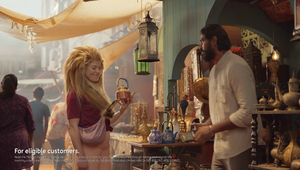
AI Is Reshaping Advertising, Not Replacing It

While concerns about oversaturation and hyper-personalisation loom, industry leaders remain confident that AI is not set to replace creatives, but empower them.
By managing the data and routine tasks, AI will allow advertisers to channel their energies into craft and creativity, ensuring that human connection remains at the heart of every campaign.
Justin Ricketts, CEO of Hogarth Australia, argued that while AI can automate data handling and repetitive tasks, it ultimately frees creatives to focus on what truly drives successful campaigns: powerful narratives.
“In a world where attention is fleeting, we must focus on the stories that connect us,” he said at SXSW Sydney.
“AI will handle the heavy lifting, so we can focus on crafting messages that resonate.”
Justin remarked on the evolving demands of marketing, noting, “With consumers expecting more from brands, the ability to produce content rapidly without sacrificing quality will define success in the near future.”
Justin stressed that advertisers need to adapt to AI technologies, which can help meet these accelerating demands.
Tom Humphries, vice-president of marketing APAC at Oracle, reinforced this, highlighting the saturation of content that consumers now encounter daily.
“The sheer volume of advertising messages can overwhelm consumers,” he said.
“AI offers us the ability to cut through this noise, allowing for more targeted and effective communication. It’s not just about reaching people; it’s about engaging them on a deeper level.
“We have the tools to analyse consumer behaviour more closely than ever before. The challenge lies in ensuring that this information is used to create value for consumers rather than intruding on their privacy.”
This balance between personalisation and respect for consumer boundaries is crucial as brands navigate the complexities of audience engagement.
Karinne Brannigan, senior vice-president of marketing at Dell, added, “Today’s consumers are savvy; they can spot insincerity a mile away.
“AI can help us craft messages that are not only personalised but also authentic and relatable.”
Karinne stressed that maintaining an emotional connection with consumers is paramount.
“When we share stories that resonate, we build communities and trust, which are invaluable in this digital age,” she explained.
“We should leverage AI to explore new narratives and perspectives that we might not have considered otherwise. It opens doors to creativity that can lead to groundbreaking campaigns.”
Justin also explained how generative AI is being employed at Hogarth to create tailored content, and test ideas against synthetic audiences, facilitating rapid iteration and refinement based on feedback. This capability, Justin said, allows brands to respond to consumer preferences more effectively.
“We can now go straight into research the minute we come up with an idea and test it against our audience,” he explained, though the technology is far from taking anyone’s job at this stage.
“It’s great for students at school,” Justin said. “If you’re creating content for Woolworths or Apple, that’s where it gets complicated.
“I think there is a lot more disruption to come.”















